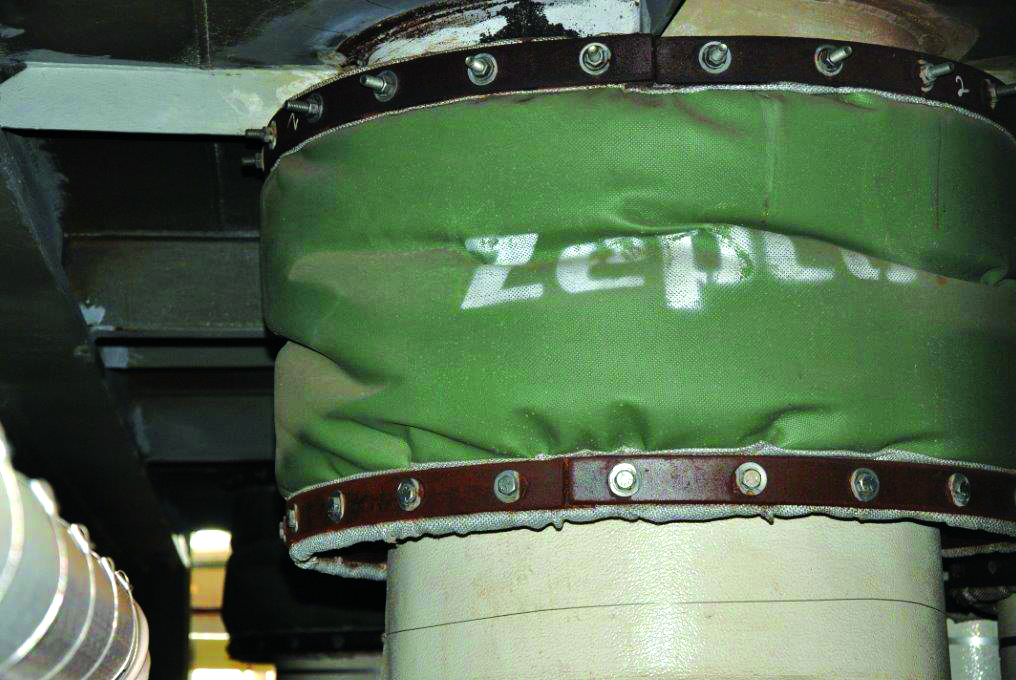Downtime is more than just a pause—it’s a costly disruption. For plant supervisors, facility managers, and process engineers, every hour lost to equipment failure can mean thousands of dollars in reduced output, missed deadlines, and safety risks. When a fabric expansion joint fails, the clock starts ticking. That’s why 24 hour fabric expansion joint replacement isn’t just a service; it’s a lifeline. At ZEPCO, we’ve built an expert-led emergency response process designed to get systems back online quickly, safely, and with long-term reliability in mind.
Why Fabric Expansion Joints Fail—and Why It Matters
Fabric expansion joints play a critical role in industrial operations, from power plants to chemical facilities. They absorb thermal expansion, reduce vibration, and compensate for pressure changes that could otherwise damage surrounding systems. But these joints don’t last forever.
Exposure to extreme temperatures, abrasive particles, and constant strain gradually wears them down. Failures often happen suddenly—splitting seams, tearing material, or collapsing under stress. When that happens, the system’s integrity is compromised. Leaks, inefficiencies, and unsafe operating conditions emerge almost instantly. Waiting weeks for a replacement is not an option, which is why 24 hour fabric expansion joint replacement has become essential for modern industrial maintenance teams.
ZEPCO’s Game-Changing 24-Hour Emergency Service
ZEPCO has become the trusted name in emergency industrial solutions by responding to what matters most: time, safety, and precision. Our 24 hour fabric expansion joint replacement service is available day or night, designed to eliminate unnecessary downtime while ensuring flawless execution.
Here’s what sets ZEPCO apart:
- 24/7 Availability: Our specialized team is always on standby, ready to deploy at a moment’s notice.
- Rapid Mobilization: With materials and tools prepared in advance, our crews are equipped to meet emergency demands.
- Custom Fit: Every joint replacement is tailored to the system, ensuring durability and exact compatibility.
- Reliable Results: ZEPCO delivers quick turnaround without compromising on quality or safety standards.
The Step-by-Step Process of Emergency Replacement
When industrial emergencies hit, process matters. ZEPCO follows a proven five-step method to ensure efficiency and safety:
- Contact & Assessment – The process begins the moment you reach out. Our engineers assess the situation remotely or onsite to understand the scope.
- Rapid Deployment – A specialized crew mobilizes immediately, bringing custom tools and materials.
- Onsite Inspection & Preparation – Every detail is reviewed, from the failed joint to surrounding structures, ensuring full compatibility.
- Removal & Replacement – The damaged joint is carefully removed, and the new fabric expansion joint is securely installed.
- Testing & Validation – Before we leave, the system undergoes rigorous testing to confirm reliability and safety.
This process allows ZEPCO to deliver 24 hour fabric expansion joint replacement without cutting corners, giving operators peace of mind when it matters most.
Why ZEPCO Stands Out in Critical Moments
In high-pressure industrial environments, trust is earned by performance. ZEPCO’s decades of experience, combined with technical precision, make the partner facilities turn to when failure isn’t an option.
- Expertise You Can Trust: Our team understands the unique challenges across power, chemical, and manufacturing industries.
- Custom Solutions: We design with longevity in mind, ensuring joints withstand harsh conditions.
- Reliability: Around-the-clock service means immediate action whenever downtime strikes.
- Quality Assurance: Every joint replacement is tested to meet or exceed industry standards.
With ZEPCO, 24 hour fabric expansion joint replacement isn’t just fast—it’s done right.
Safety and Confidence After Replacement
What sets ZEPCO apart is the assurance that once the job is complete, your system is not just running again, but running safely. The materials we install are designed for the toughest conditions—high temperatures, corrosive environments, and extreme pressures. Facilities can move forward knowing their operations are reinforced by both technical excellence and a commitment to safety.
When Minutes Matter, ZEPCO Delivers
In industrial environments, emergencies don’t wait for business hours. They demand action now. ZEPCO’s 24 hour fabric expansion joint replacement service is built for this urgency—restoring operations quickly, protecting safety, and ensuring long-term performance.
If your plant faces an emergency, don’t let downtime spiral into greater losses. ZEPCO’s team is ready to respond immediately. Reach out today for rapid, expert support.
ZEPCO keeps your operations running—safely, efficiently, and without unnecessary delay.

